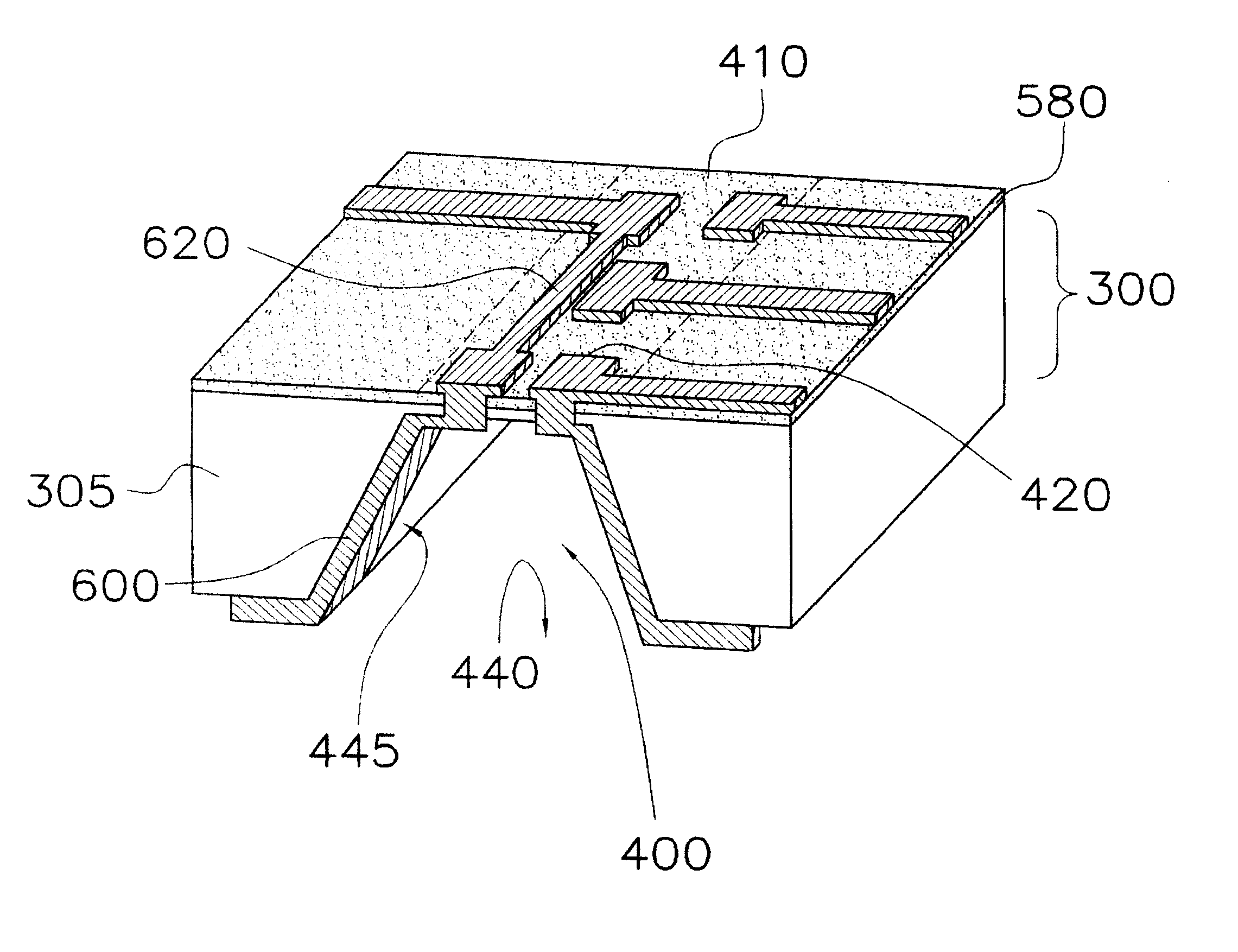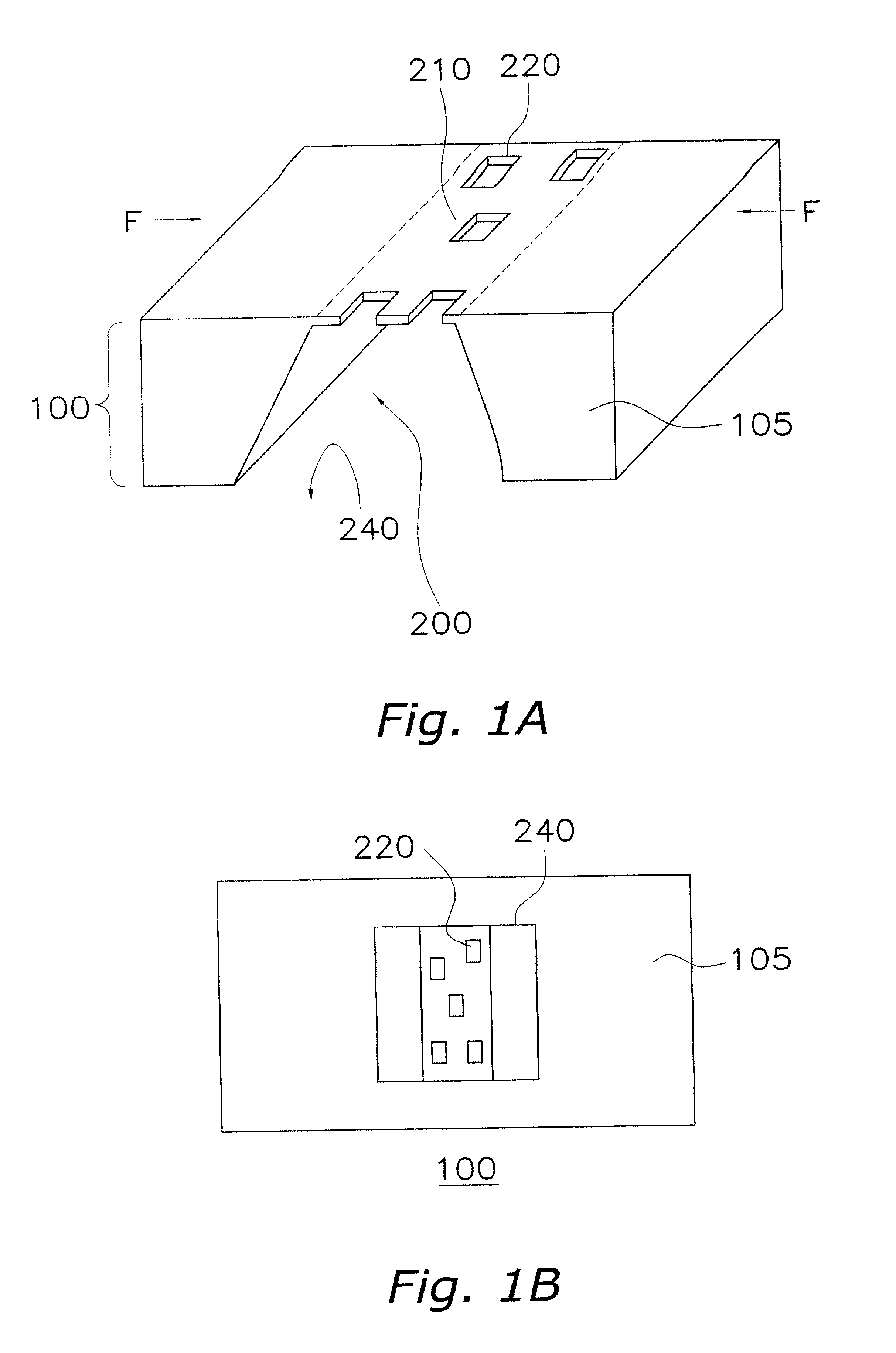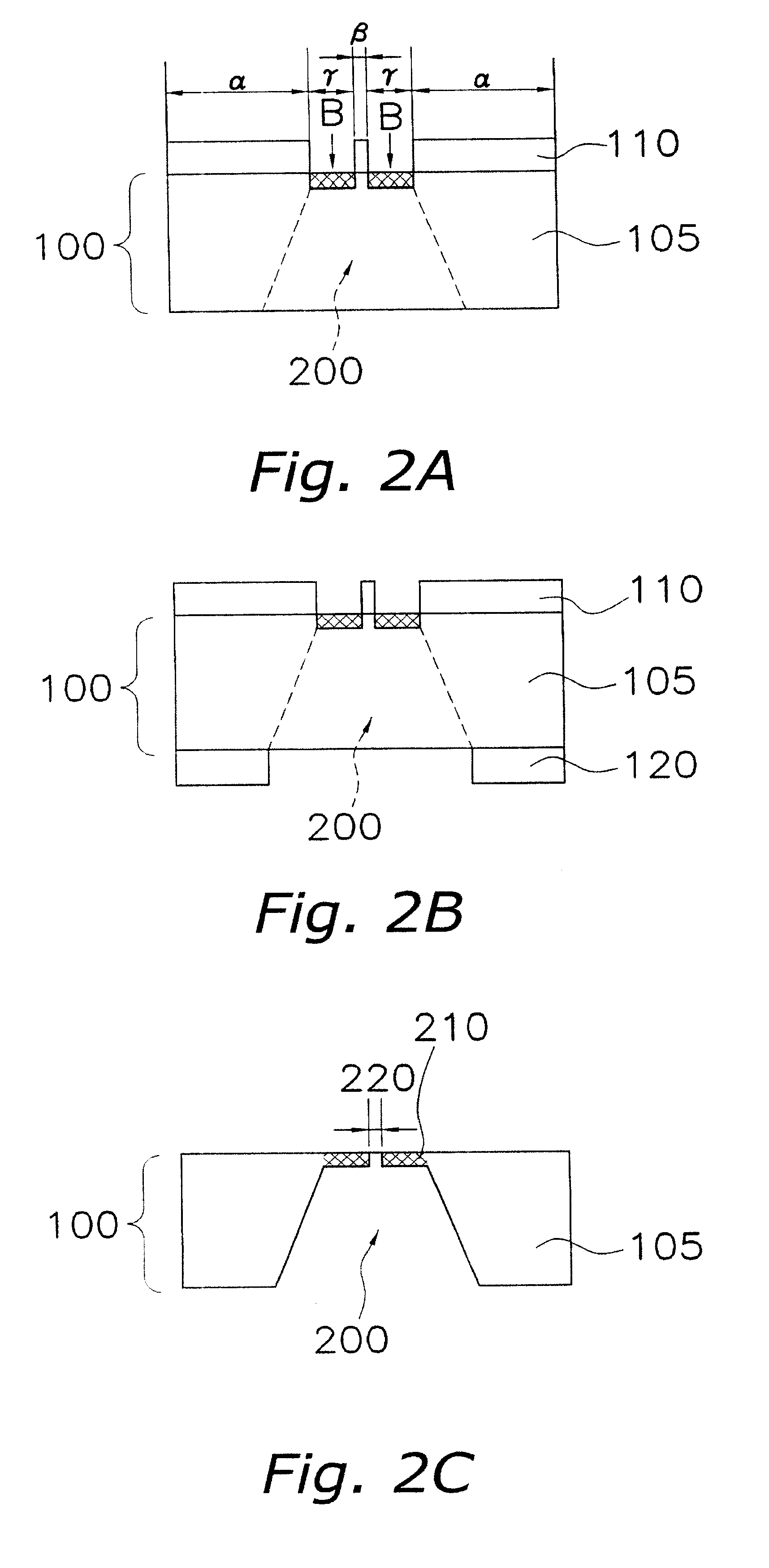Semiconductor device and method of producing the same
a semiconductor and semiconductor technology, applied in the direction of microstructural devices, microstructural technology, basic electric elements, etc., can solve the problems that the structure of wires, films, semiconductor elements formed on the main unit of the semiconductor substrate and/or the thin portion, or through the through hole, will be difficult to delaminate from the semiconductor device, and achieve excellent adhesiveness , the production process can therefore be simplified.
- Summary
- Abstract
- Description
- Claims
- Application Information
AI Technical Summary
Benefits of technology
Problems solved by technology
Method used
Image
Examples
first embodiment
[0088] FIG. 7 is an example of the application of the basic structure of the first embodiment to a semiconductor device having microwiring. A semiconductor substrate 300 of this semiconductor device includes a semiconductor substrate main unit 305, a thin portion 410 on the upper surface side of the semiconductor substrate 300, an interlayer insulation film 580 formed on the semiconductor substrate 300, and wiring 600, 620. The thin portion 410 is positioned between the semiconductor substrate main unit 305, and is thinner than the semiconductor substrate main unit 305. Through holes 420 are formed in the thin portion 410. In addition, a recessed portion 400 and an opening 440 on the lower surface of the semiconductor substrate 300 are formed by means of the thin portion 410 and the semiconductor substrate main unit 305. The wiring 600 connects the upper surface and the lower surface of the semiconductor substrate 300, and is formed along a wall surface 445 of the recessed portion 4...
example 2
[0096] FIG. 9 is an example in which the semiconductor device of FIG. 7 is laminated. As shown in FIG. 9, a semiconductor element 500 that includes a gate electrode 520, a source 540, and a drain 560 is formed on a semiconductor substrate 350. The interlayer insulation film 580 and wiring 640, 645 are sequentially formed on the semiconductor element 500. The wiring 640, 645 are respectively connected to the source 540 and drain 560 via a contact hole in the interlayer insulation film 580. The semiconductor substrate 300 is laminated onto the upper portion of the semiconductor substrate 350 to form a unitary semiconductor device. The wiring structure on the upper portion of the semiconductor substrate 300 is identical to that shown in FIG. 7. Here, the electrical connection between the upper portion of the semiconductor substrate 300 and the lower portion of the semiconductor substrate 350 is carried out by connecting the wiring 640, 645 on the lower portion of the semiconductor subs...
example 3
[0097] FIG. 10 shows an example of a semiconductor device in which semiconductor elements are formed on the upper and lower surfaces of the semiconductor substrate. Semiconductor elements 900 that each include a gate electrode 920, a source 940 and a drain 960 are respectively formed on the upper and lower surfaces of a semiconductor substrate 700. An interlayer insulation film 980 and wiring 1000 are sequentially formed on each of the semiconductor elements 900. The semiconductor elements 900 on the upper and lower surfaces of the semiconductor substrate 700 are connected to each other by means of the wiring 1000. The wiring 1000 is formed on the thin portion 810 and the semiconductor substrate main unit 705, and is formed along a wall surface 845 of a recessed portion 800 via a through hole 820. Due to the above structure, the semiconductor device will be mechanically and structurally strengthened by the thin portion 810, and flexion of the semiconductor device will be reduced. As...
PUM
 Login to View More
Login to View More Abstract
Description
Claims
Application Information
 Login to View More
Login to View More - R&D
- Intellectual Property
- Life Sciences
- Materials
- Tech Scout
- Unparalleled Data Quality
- Higher Quality Content
- 60% Fewer Hallucinations
Browse by: Latest US Patents, China's latest patents, Technical Efficacy Thesaurus, Application Domain, Technology Topic, Popular Technical Reports.
© 2025 PatSnap. All rights reserved.Legal|Privacy policy|Modern Slavery Act Transparency Statement|Sitemap|About US| Contact US: help@patsnap.com



